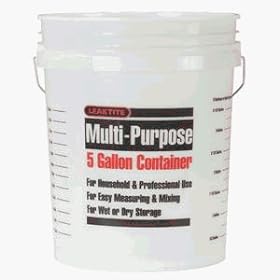If you use a secondary your beer will be clearer. Fact.
Just using a primary is "clear enough" for some people. It is not clear enough for me or a brewery.
Ask a brewery why they use a seconday don't just assume.
Forrest
Sorry Forrest but I call BS..... I'm actually a little disheartened that you of all people wouldn't be up on the latest discussions/trends in brewing to just make such a blanket ascertion that beer is clearer in secondary than those of us that have for the last 5 years opted for long primaries. I would state that since I've been using long primries as opposed to secondaries, my beer is CLEARER, taste better, and my scores in contest have risen greatly, as have the comments as to the clarity and crispness of my beer, from those judges, since I skpped secondaries. Other's have noted similar things.
It is no longer as concrete a fact as you state. Hence the fact that even recipes by your competitors, as well as BYO are bgininng to reflect this fact. There is at least one of your direct competitors in kit making who have begun to have their recipes in the long primary format.
I've often mention how not every vendor is up to date in their knowlege, that they don't hang out on forums, or read the latest magazines, or are up on the latest ideas in brewer. And that some are just 'can't teach an old dog new tricks" type owners, I just never thought you would be one as well.
There is now enough information, not just conjecture on this forum, but articles in byo, discussions on podcasts, and other forum to give credence to the long primary as a means to improve clairty/quality, that it no longer is "one way or the high way" like you so adamently state. It has been shown over the last few years, that whether you secondary or long primary instead doesn't really matter,
both work and both work great.
It's no longer a matter of "Secondaries make for clearer beer, period" a lot of folks, even folks who scoffed at those of us who started doing this 5 years ago, are no longeer so convinced in their original asertions, they may not opt for long primaris, but they don't skoff at it either. The at least acknowlege that our way my have some merit, and some validity, after 5 years of folks trying it both ways.
As to the "professional brewers all use secondaries" part of your argument, the last time you posted that in a thread, SEVERAL poster challenged that by posting the names of microbreweries, and brewpubs, and craft breweries who DIDN'T use a secondaries either.
I am really shocked that you are so close minded on this, I've always respected your insights, and that you are no only here to solicit business, but you are also an active part of the community here, giving advice and sharing your wisdom. I am just disspointed that, especially with this being such a huuuge part of the cutlure and the discussions on here (long primaries) that you would maybe have soaked up some of the wisdom, and knowlege on here as well. I would have thought you would have been less emphatic in your declarations......




